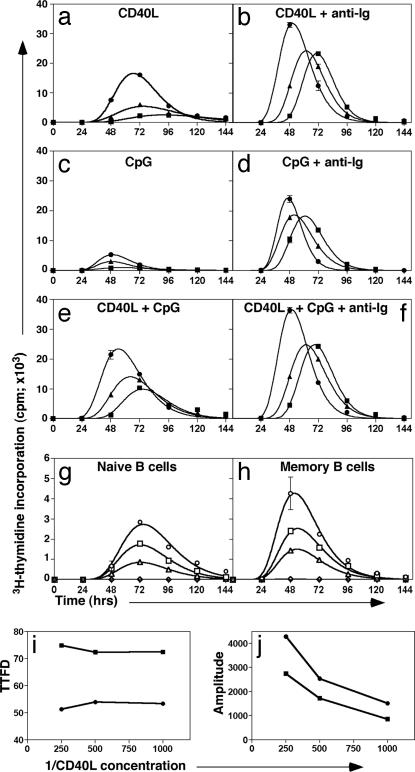Fig. 1.
IgM and switched memory B cells enter division earlier than naïve B cells do regardless of the type or doses of stimulus used. (a–f) Sort-purified naïve (■), IgM memory (▴), and switched memory (●) B cells were cultured (1.5 × 105 per ml) with CD40L alone (a), CD40L plus F(ab′)2 fragments of anti-Ig (10 μg/ml) (b), CpG (1 μg/ml) (c), CpG plus anti-Ig (d), CD40L and CpG (e), or CD40L, CpG, and anti-Ig (f). Proliferation was assessed every 24 h by determining incorporation of [3H]thymidine during a 4-h pulse. The mitotic inhibitor demecolcine (10 ng/ml) was added at the onset of culture to measure entry of the cells into their first S phase and therefore ttfd. The center of the curve is the mean ttfd; the height is proportional to the number of cells entering division. Values represent the mean ± SEM of triplicate cultures. (g–j) Sort-purified naïve (g) and total memory (h) B cells were cultured (2.5 × 105 per ml) with 2-fold dilutions of CD40L (○, 1/250; □, 1/500; ▵, 1/1,000; ◇, no CD40L). The ttfd (i) and amplitude (j) of the responses of naïve (■) and memory (●) B cells were calculated. These results are representative of two or more independent experiments performed with B cells from different spleens.

